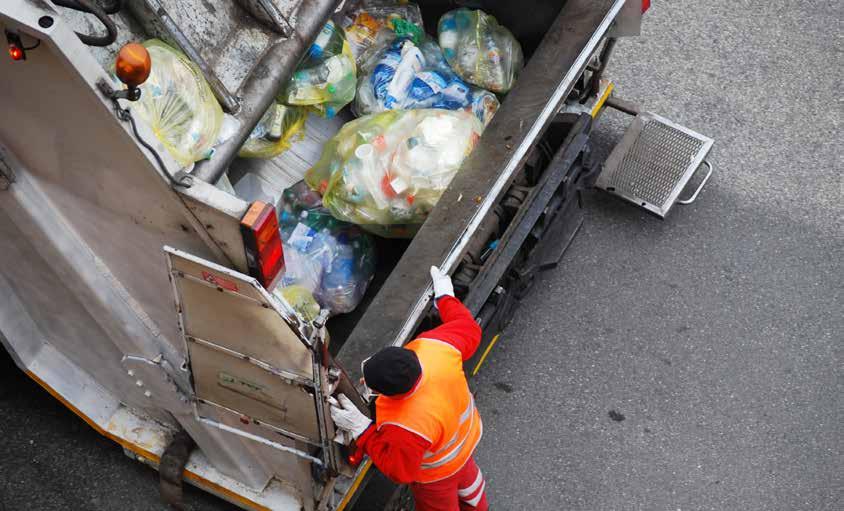
4 minute read
Using AI-based solutions to improve waste logistics
from ReSource August 2020
by 3S Media
The Covid-19 pandemic has had a tremendous impact, not only on the economy but also on the waste management sector. As lockdowns were imposed around the world, municipal waste operators had to rapidly adapt their waste management systems to better accommodate increased household waste and a decreased workforce. By Nombulelo Manyana
Although public waste management was deemed essential and continued operating under strict lockdown regulations, traditional waste collection models struggled to adjust to the changes brought on by the pandemic.
Advertisement
Speaking at a webinar hosted by the IWMSA – on the topic ‘Ensuring robustness of waste logistics during challenging times’ – Elias Willemse, current CTO and co-founder of Waste Labs, noted that the Covid-19 pandemic has made everyone realise how fragile and outdated most waste management collection systems are.
“In Singapore, when the pandemic hit, the traditional systems struggled to adapt to change,” he said.
Willemse says the traditional approach to managing abrupt changes introduced to the current operating systems is usually a trialand-error approach, which relies heavily on the knowledge of experienced personnel, taking lessons from other municipalities who have experienced similar problems or simply hiring consultants.
However, Willemse said that this method has proved ineffective. “The alternative way to deal with such problems is simply to get ahead of it, by investing the necessary time and resources now, leveraging new technologies and digitisation for planning.”

Digital twin
Waste Labs, a Singapore-based start-up company, uses AI and software solutions to assist cities and waste collectors to digitise and improve their waste collection operations by developing what is called a digital twin.
A digital twin is a digital replica/simulation of the actual physical waste system, which is then used for the purpose of planning different scenarios, optimisation of the system and diagnostics of existing systems.
“One of the scenarios we’re currently building is to see what happens if you lose your waste collection resources. What happens if you have fewer drivers? What happens if you have fewer trucks? Where will the waste start to pile up? And then where should you prioritise the resources that you have left.
“Through our platform, we can easily test these scenarios. It’s virtual – it’s on a computer. So, you can easily take resources out of the collection system on the platform, and then see how and where the waste piles up and all the rest of the collection resources should be assigned.”
The first step is collecting all the necessary population data through GPS tracking, load cells tracking (tracking the amount of waste collected on each route), or using synthetic populations.
Although the use of synthetic populations is rare, Willemse stated South Africa is a leader in this particular aspect.
Developing synthetic populations
Discussing his article titled ‘Synthetic populations of South African urban areas’, Professor Johan Joubert in the Centre for Transport Development, Department of Industrial and Systems Engineering at the
University of Pretoria, said the development of these synthetic populations will help municipalities not only develop appropriate waste collection plans, but also aid in the response to an unexpected upsurge in waste due to crises, like a global pandemic.
“We need these measurements to plan how waste collection will be designed and how much collection is needed in a particular area. Planning based on the average household model is not good enough,” he said.
Joubert and his team generated complete synthetic populations for nine major metropolitan and provincial areas, using the South African National Census. The populations are accurate at both household and individual level.
The data that is generated includes: • age • income • race • gender • education • employment • dwelling type • rooms • piped water • toilet facilities.
Following that, each household is associated with an actual land parcel, district municipality and to its closest road link.
“These synthetic populations are used to estimate waste and then determine how much waste collection is needed on a particular route,” said Joubert.
What is done with this data?
According to Willemse, this is where the digital twin comes into play. Once the initial data is collected, it helps to expose any weaknesses in the current system.
“The twin is then used to create detailed scenario simulations and comparisons, which will insure more effective resource planning,” he said.
This includes determining which days will be reserved as designated service days, fleet design, route optimisation, calculating environmental, operational and societal costs, different waste generation rates for households, and pinpointing needed collection points.
When is this model appropriate?
Willemse asserted that this system is particularly appropriate to use when:
• there are sudden changes: when there is a need to plan contingencies very quickly, like in the case of the Covid-19 pandemic
• there are interdependencies: cost vs uncollected waste vs employee safety
• in uncharted territories: when staff haven’t dealt with anything like this before.
Willemse concluded by pointing out that although waste has lagged in digitisation, it is improving, and the pandemic has provided an opportunity to realise where technology can play a major role in running complex waste systems.
“These planning tools can help waste collectors and planners but will not replace them. Our tools, coupled with experienced personnel, will ensure more effective waste collection systems.”


